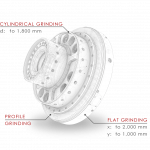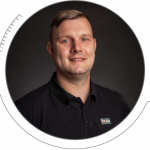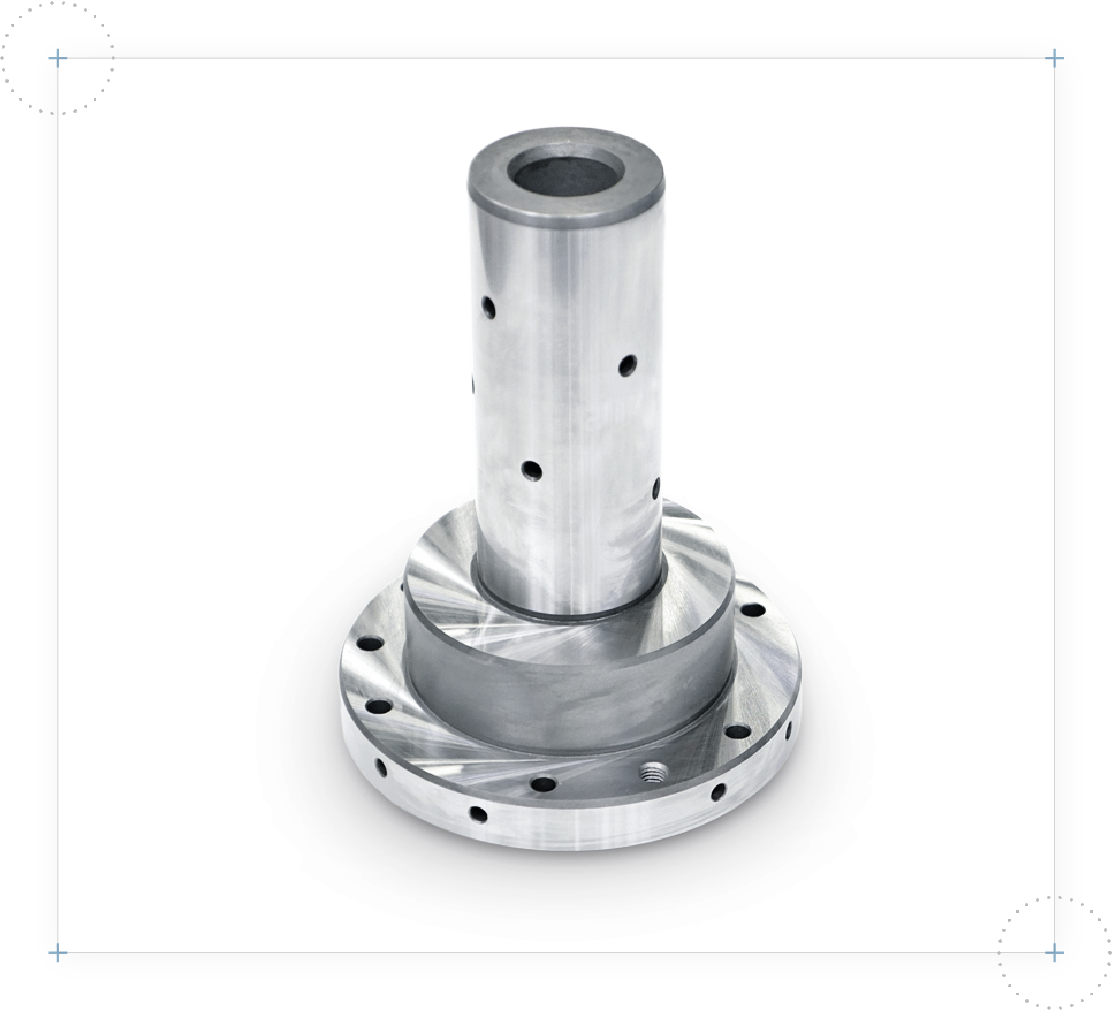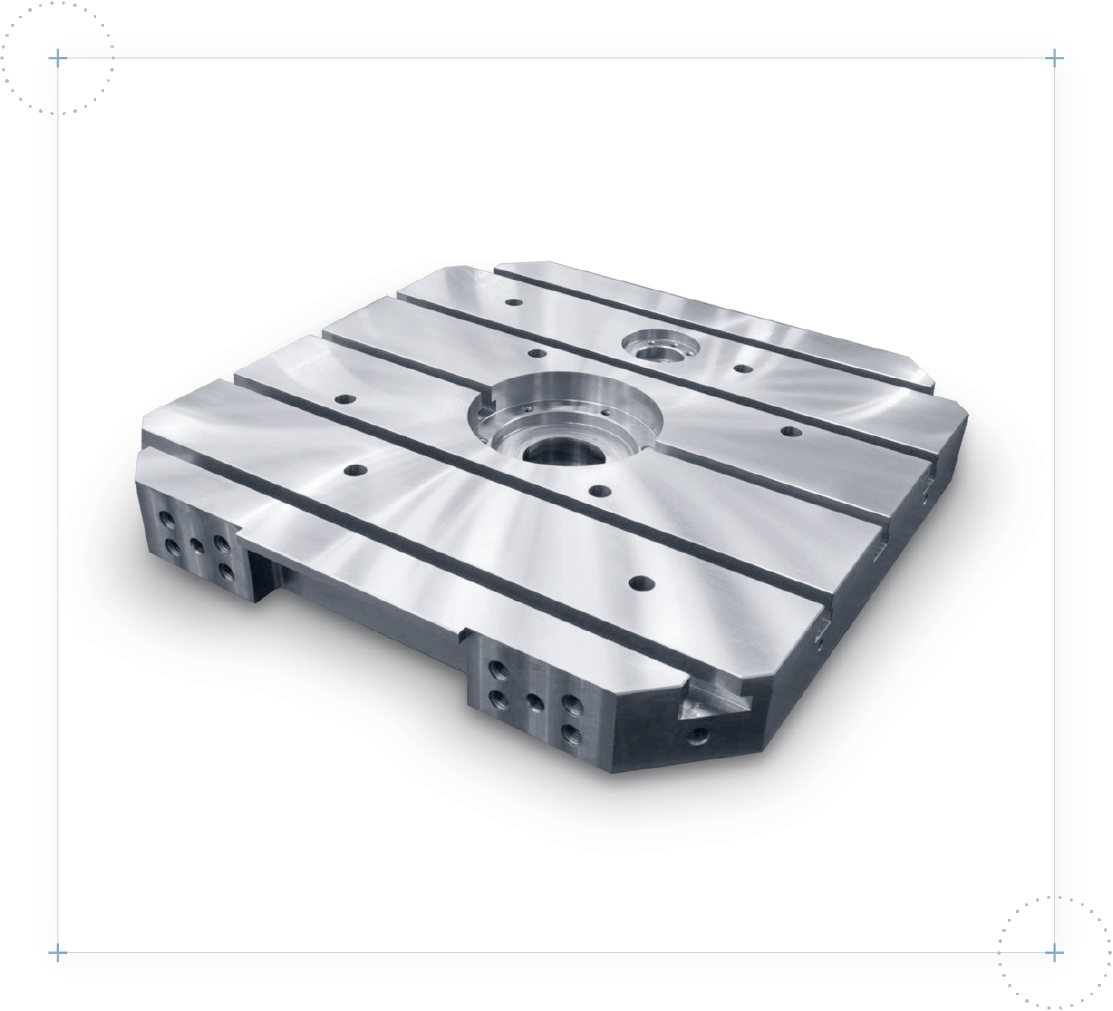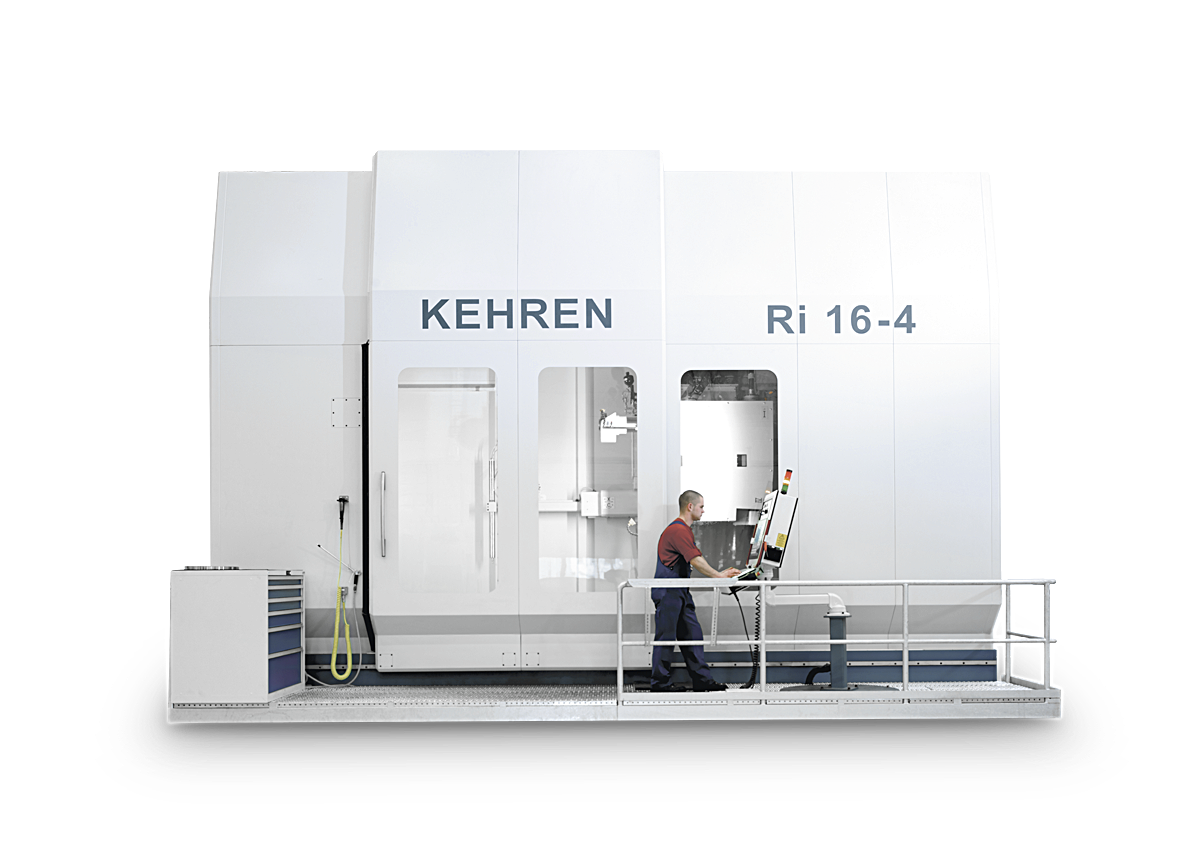CNC grinding, like CNC turning and milling, is a machining process. In CNC turning, milling and boring processes, the production process uses tools of a specified shape. In grinding (CNC grinding), the production process uses tools of an unspecified shape. Material removal from the workpiece is carried out using a grinding tool consisting of industrially manufactured mineral crystals. The many microscopically small cutting edges of the hard crystals create very fine chips, also known as grinding dust. The tool can be shaped as a disc, block or belt. The cut speed, in comparison to CNC turning, for example, is greater by a significant factor. This means that a great deal of heat is generated from friction, which usually has to be reduced through the use of cooling lubricants in order to avoid thermal expansion or heat damage to the workpiece. The grinding process is particularly good for especially hard materials such as tempered metals or ceramics. CNC here stands for “Computerised Numerical Control”. Using this technology, workpieces can be automatically manufactured and further processed to high precision and in various different batch sizes (single components, small and large-scale series).
Through cylindrical grinding, cylindrical surfaces of workpieces can be smoothed to their final dimensions. We also distinguish between exterior and interior cylindrical grinding. While in the former process only the exterior lateral surfaces can be processed, interior cylindrical grinding allows for the treatment of bored holes through the variable insertion of tools.
Surface grinding allows flat surfaces – machine tables, for example – to be processed into their final state. The cutting motion is produced here by the rotating grinder and its feed motion over the workpiece.
Profile grinding allows particular shapes such as grooves, teeth or slits to be processed. The profile of the grinding tool here is that of the finished component. In contrast to gear grinding, each profile (tooth) on the workpiece has to be handled one after the other.
As with profile grinding, the profile of the grinding tool corresponds to the finished component. However, the grinding surface traces an ellipse across the entire tool. In this way, several teeth of the cylindrical worm are always ground in the process. Because of the continuous action, shorter processing times are possible than with profile grinding.
In face grinding, a grinding surface is used and positioned perpendicular to the axis of rotation of the workpiece. The grinding crystals of the tool thus move at different speeds depending on their distance from the axis of rotation. A different grinding effect is achieved than with peripheral grinding. Face grinding is only intended for specific purposes.
In peripheral grinding, the lateral surface of the tool is used. This is placed parallel to the axis of rotation. All grinding crystals have the same cut speed, as they are rotating over the same circumference. A more even grinding effect is achieved than with face grinding.
Using coordinate grinding, high-precision adjustments can be produced. Modern CNC coordinate grinding machines work with a resolution up to 0.001µm, that is, on the nanoscopic scale.
Do you want to commission a CNC-turned part? Send us a request now:
Request your offer
So that we can deliver you your CNC milled parts ready for installation, we will be happy to take over surface treatment works, including inspection. Our high-performance and regionally developed cooperative network gives you access to the full scope of services – all in the one place.
After CNC manufacture, milled parts can also be subjected to further mechanical processing. This includes treatments such as grinding, polishing, sand- or glass bead blasting. In addition, we can also offer various different marking technologies, such as engraving, dot peening, etching and laser marking.
In order to fulfil stringent demands regarding material hardness, toughness and concomitant long service life in CNC milled parts, we also carry out heat treatments. Potential processes here include annealing, hardening and tempering.
To improve CNC milled parts’ resistance to mechanical strain and corrosion, they can optionally be electroplated. This is an electrolytic process in which the surface of the part in question is either coated or transformed. Together with our regional cooperation partners, we are able to offer you nickel-plating, galvanisation, bluing and phosphate conversion.
The surface of CNC milled parts can also be optically and functionally improved by coating and painting. We will be happy to advise you on the painting options we offer in-house, such as powder-coating.
As the finished CNC turned parts are directly destined for temporary storage or shipment, conservation and corrosion protection are very important. From the targeted use of protecting materials to specialist packaging, we guarantee the best possible safeguarding of your precision components. Do you want to commission a CNC-turned part? Send us a request now:
Request your offer
